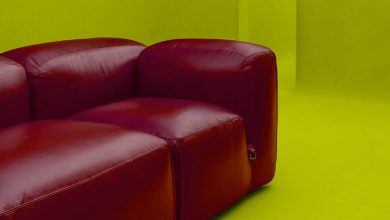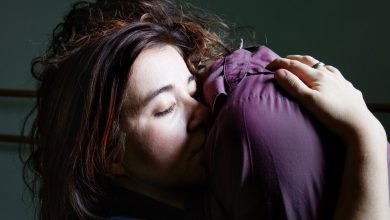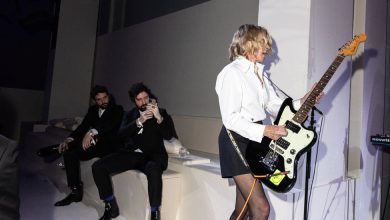A New York Loft Where the Art Comes First

IN THE 1960S and ’70s, clearing out and refinishing a downtown loft was a rite of passage for New York artists, who were drawn by cheap rent and ample studio space to the postindustrial buildings of SoHo and TriBeCa. Today, of course, those same addresses are luxury real estate, but the loft hasn’t lost its appeal in the art world. The difference: Potential buyers are now more likely to be seeking ideal places in which to display art, not create it.
That was the case for the art dealer Peter Freeman, 67 — whose namesake gallery on Grand Street is best known for contemporary and postwar minimalist works — and his wife, the art conservator Lluïsa Sàrries Zgonc, 61, when, in 2020, they purchased a 2,600-square-foot apartment on Warren Street in TriBeCa. Occupying the entire fourth floor of a marble-clad, Italianate-style former warehouse, it hadn’t been touched since its 1990s condo conversion. But the space was rare. Constructed in 1854, the building is wider and shallower than most in the neighborhood, meaning the loft is “a square, not a shoe box,” as Freeman puts it, with just one hallway, copious open space, high ceilings and plenty of light.

“Five Dollar Bill” by John Frederick Peto (circa 1885) hangs above a chest of drawers designed by Mogens Koch in 1932 and a Liberty & Co. Thebes stool (circa 1884). Schütte’s 2021 “Old Friends Revisited” (which includes the pedestal) and Mel Bochner’s painting “Snarl” (2015) overlook a Moroccan carpet topped with a set of three stools (circa 1989) by the Barcelona-based designers Jordi Miralbell and Mariona Raventós.Credit…Dean Kaufman. Thomas Schütte artwork: © Thomas Schütte; Mel Bochner artwork: © Mel Bochner
To oversee the renovation, which took seven months, the couple turned to the architect Landon Brown, who was previously the studio director at Toshiko Mori Architect, the firm that designed Freeman’s gallery. Brown eliminated a coat closet and moved an electrical panel to create two walls big enough for sizable paintings; narrowed two of the guest rooms (one of which Sàrries Zgonc, a cellist, uses as a practice space) in order to widen the third and turn it into a library; and overhauled the kitchen, installing an ultradurable end-grain oak floor similar to those Sàrries Zgonc had admired in the factories of her native Barcelona. Facing the marble countertop are two original teak stools by the Swiss architect Pierre Jeanneret, designed around 1965 for the science lab at Panjab University in Chandigarh, India, a city planned from the ground up by the Swiss French architect Le Corbusier.
THE MAJORITY OF the loft’s furnishings reflect the couple’s many decades of collecting, which for Freeman began in 1976, when, as an art history student at Harvard, he got a dealer to agree to a $20-a-month installment plan for a pair of Sol LeWitt rip drawings. (They’re currently in storage.) The library includes a full set of the art theory journal October — dating back to its first issue, released in 1976 — as well as a black walnut desk designed by Donald Judd in 1978. In the entryway, three subtle, matte gray tin wall works by Richard Tuttle hang over the elevator door. The main living space is dominated by two outsize pieces, both by artists with connections to Freeman’s gallery. The German visual artist Thomas Schütte’s 2002 “Gelber Kopf” (“Yellow Head”) perches between two of the front windows. Freeman acquired the sculpture, which is acid bright and nearly six feet tall, from Schütte’s show that same year at Galerie Nelson in Paris. (After the death of the gallery’s owner, Philip Nelson, in 2006, the space became Freeman’s Paris outpost.) In the adjacent living area, between a pair of bookcases, is a 6½-by-13-foot 2016 white-and-yellow diptych of an Italian locomotive by Matt Mullican, another of Freeman’s artists. “It looks normal there,” says Freeman, “but it’s actually a giant painting.”



